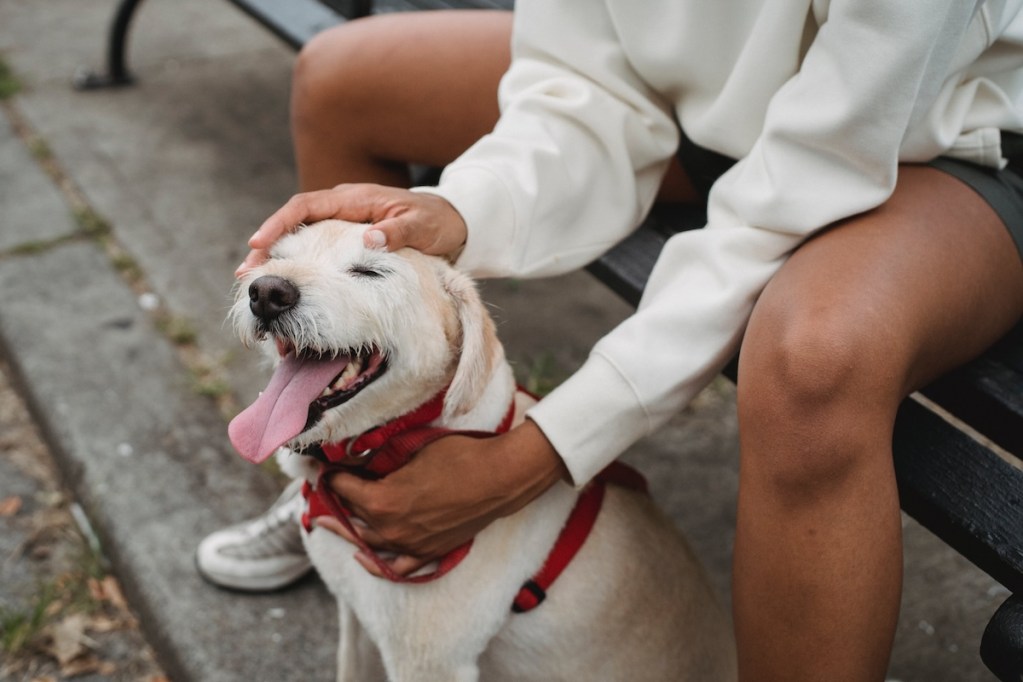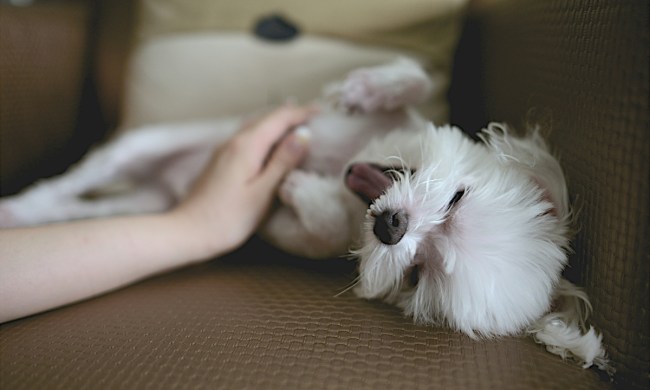There are a hundred ways to make a dog happy, from delicious treats to epic playtime. Pets, scratches, and belly rubs almost always make the top of the list, too — but did you know there are particular ways to pet your dog to show them how much you love them?
In this article, you’ll learn how to pet your dog — what tricks and techniques to use to relax them, what spots to avoid, and how to keep everyone comfy and happy. Of course, every dog has their own likes and dislikes, so it’s important to pay attention to your fur baby’s body language and behavior during your massage sessions.
This is what you need to know.
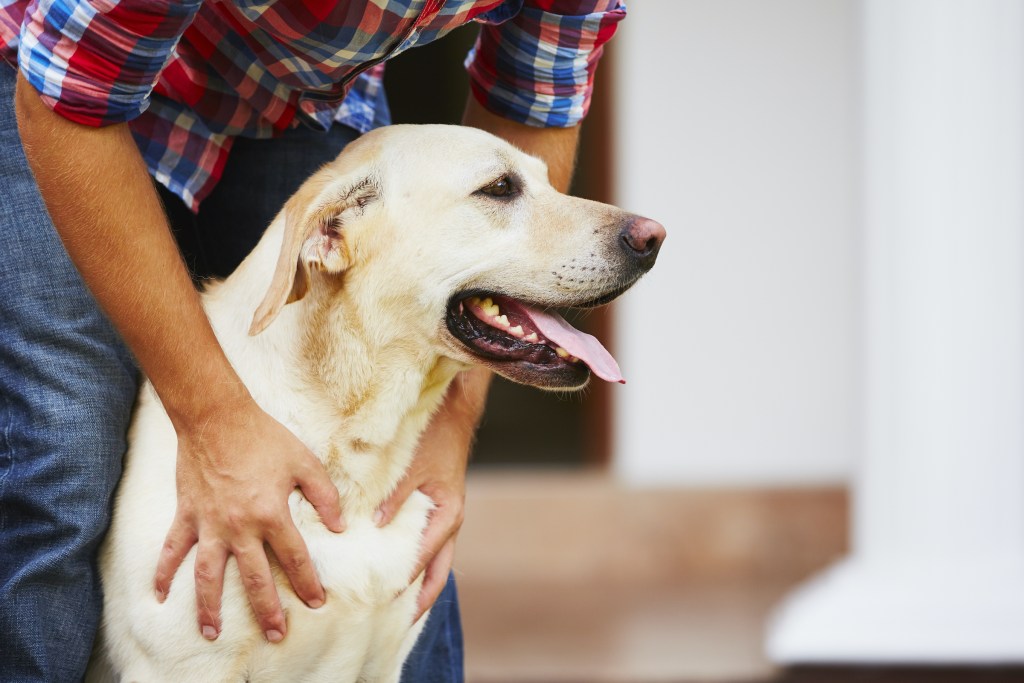
How to pet your dog to show them you love them
In general, most pups are just happy to get some attention from their favorite person, but there are a few specific things you can do to make your next pamper sesh a little more special.
Be gentle
It should go without saying that no one should be rough with a dog under any circumstances, but being particularly gentle can go a long way in putting your pup at ease. It can also make petting less distracting, which will be nice if your fur baby is falling asleep or trying to relax.
Use this technique as a calming method when your dog is worked up or anxious, though it may be more of a background tool than your main method of redirecting their attention. Long, gentle strokes are reassuring and steady, but not overstimulating — perfect for showing your furry friend how much you care.
Try an ear rub
If you’ve noticed your dog in absolute bliss while you’re giving them a good ear massage, you know you’re doing something right. Merrick Pet Care notes that, because the spot behind a dog’s ears contains a bundle of nerve centers, it can be a particularly sensitive and euphoric spot for a rub.
“When gently scratched,” Merrick’s website reads, “it triggers impulses throughout the entire body thus releasing endorphin hormones. These hormones act as painkillers. Therefore, a gentle scratch will make your dog feel relieved.”
Long, downward strokes
How you pet your dog can tell them a lot about your energy, which is contagious. For example, if you’re giving your dog quick, all-over scratches, it’s easy for them to get a bit riled up. Long, slow, downward strokes are more predictable, calming, and relaxing for your pup.
The Central California SPCA suggests keeping one hand on your pup’s body while the other massages if they’re known for being a bit skittish. They won’t be surprised or distracted by anything — now you can focus on bonding with your fur baby.
Let your dog initiate
If you’re ever feeling unsure about your dog’s feelings (i.e., would they like more scratches or more space?) why not let them initiate a cuddle session? You can wait for Fido to give you a nudge or another sign of “hey human, I’m ready” or you can see how they respond to a few seconds of petting before you continue.
Hill’s Pet tells pet parents what to look out for: “If a dog wants to be petted, he will sniff you, and then his ears and other parts of his body become relaxed. When he starts to wiggle a little bit or nuzzle up against you, that’s your sign that he’s ready for a good round of petting.”
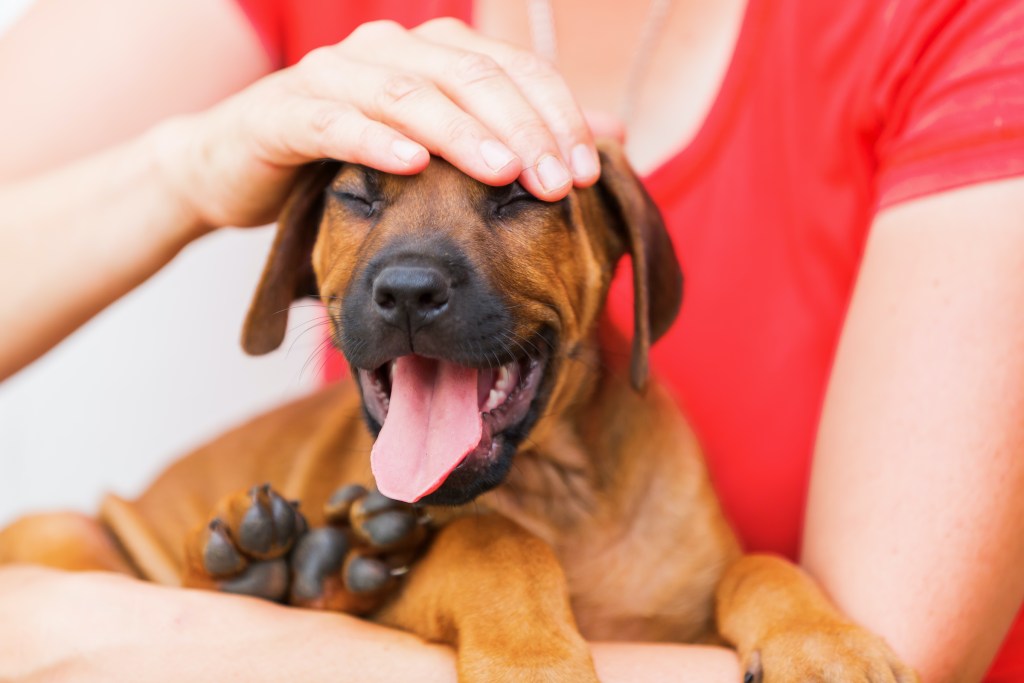
How not to pet a dog
Though most petting is happily accepted, there are a few ways you shouldn’t touch a dog. You’re less likely to run into major problems — like a fear reaction — when you’re working with a dog who knows and trusts you, but it’s still a good idea to know what may trigger stress in canines.
Don’t go for the top of the head first
As much as you might be tempted to give your buddy a good ol’ head rub, know that they may find it unsettling. A pup of any age or size can feel threatened by something — or someone — looming over their head where they can’t see which can result in a number of reactions. Instead, bend down to their level and offer your hand out to the side, palm up, if your pup seems unsure.
Avoid certain spots
Although there are certain dogs who love scratches anywhere on their body, most will have at least one spot they prefer not to be touched. Don’t worry — you’ll get to know your pup’s preferences in time. Common spots that dogs keep to themselves include their tails, paws, and faces.
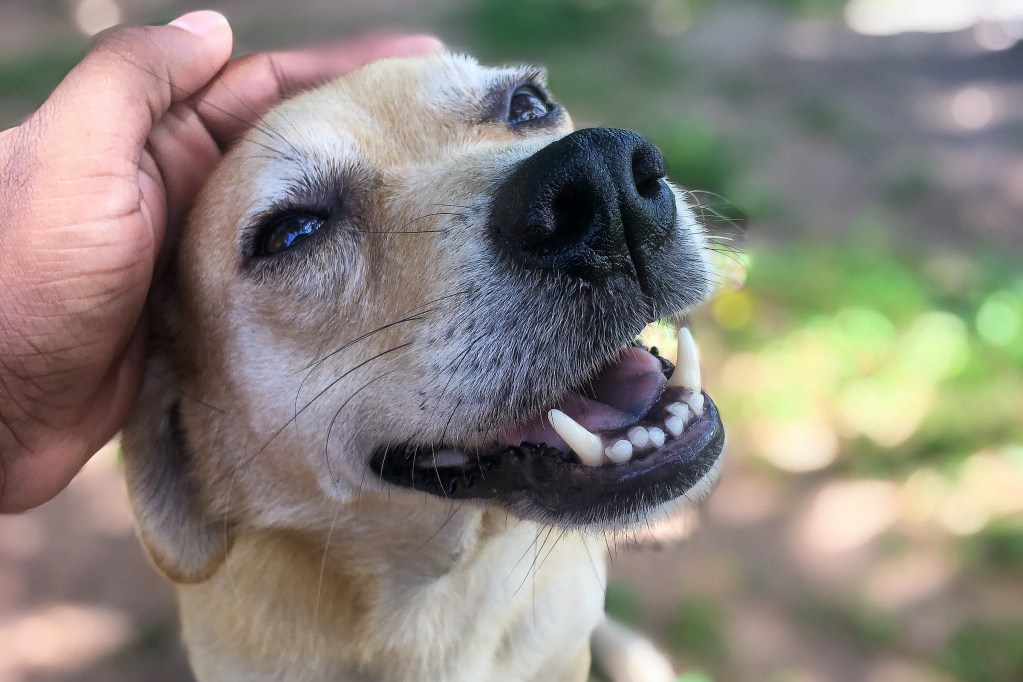
What are dogs’ most sensitive spots?
Knowing how to pet your dog might look easy on the surface, but as you now understand, there’s a lot more to it. With a little learning (you’ve just mastered that part) and practice, you can have your pup on cloud nine in no time. Before you know it, your fuzzy friend will be asking for your attention all the time.
